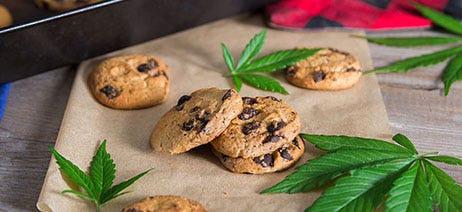
Cannabis Cookies Recipe for DIY Infused Edibles
There’s nothing quite like a warm, freshly baked cookie—especially when it’s infused with cannabinoids. If you’re a fan of edibles, cannabis cookies are a must-try. They’re easy to make, incredibly tasty, and completely customizable to suit your flavor and dosing preferences. Our mouths are already watering, so let’s get into it.
What are Marijuana Cookies?
THC-infused cookies—also known as cannabis cookies, marijuana cookies, or pot cookies—are classic baked edibles, much like their marijuana brownie cousins. The concept is simple: swap regular butter or oil for cannabutter or cannabis oil in your recipe, and you’ve got yourself a batch of cookies with a little extra kick. You can still stick to your favorite cookie recipe—even the one passed down from Grandma—just with a cannabis twist.
When it comes to enjoying marijuana cookies, you’ve got two options: buy them pre-made from a dispensary or bake them yourself. Store-bought edibles are super convenient, but you're limited to whatever flavors and potencies your local dispensary carries. If you’d rather put your own spin on things and make edibles at home, just grab some cannabutter or cannabis oil from a dispensary—or create your own—and get baking.1
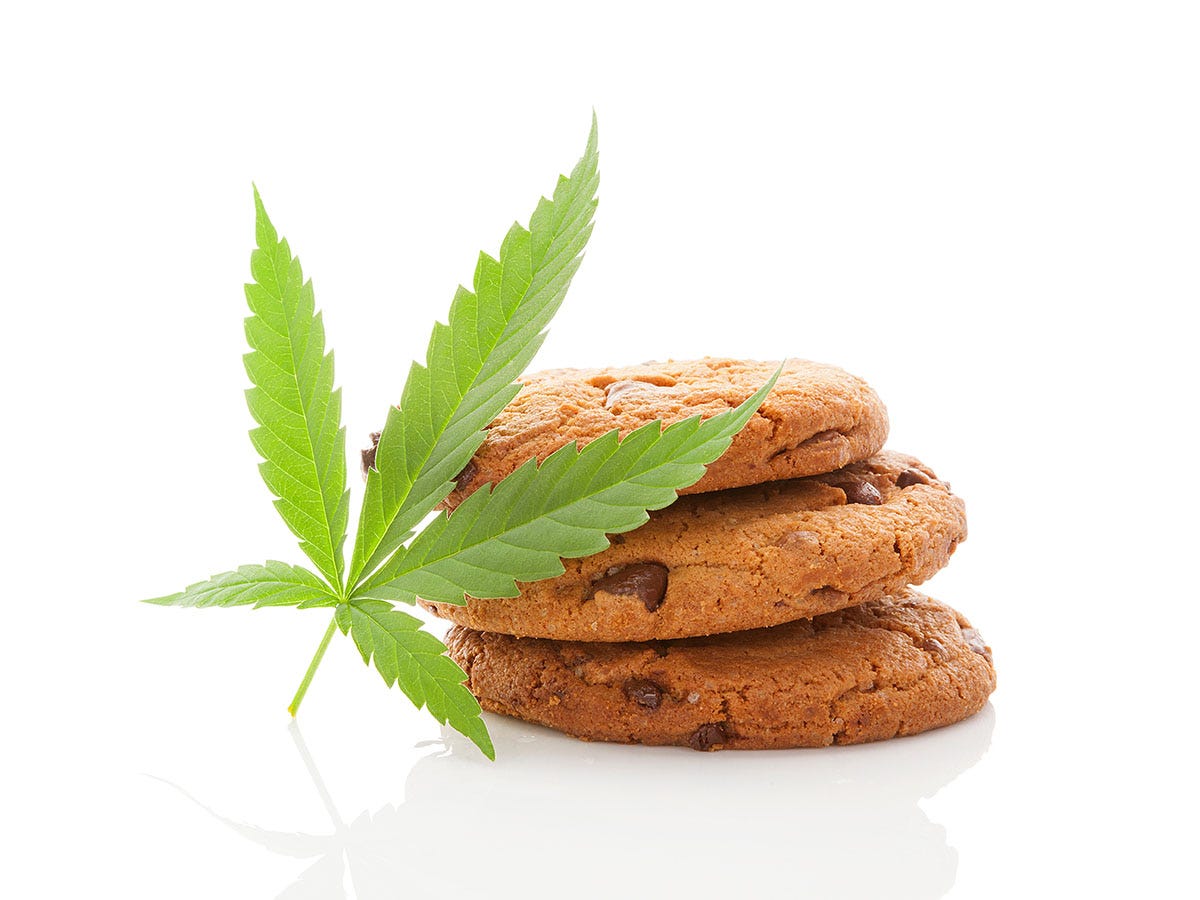
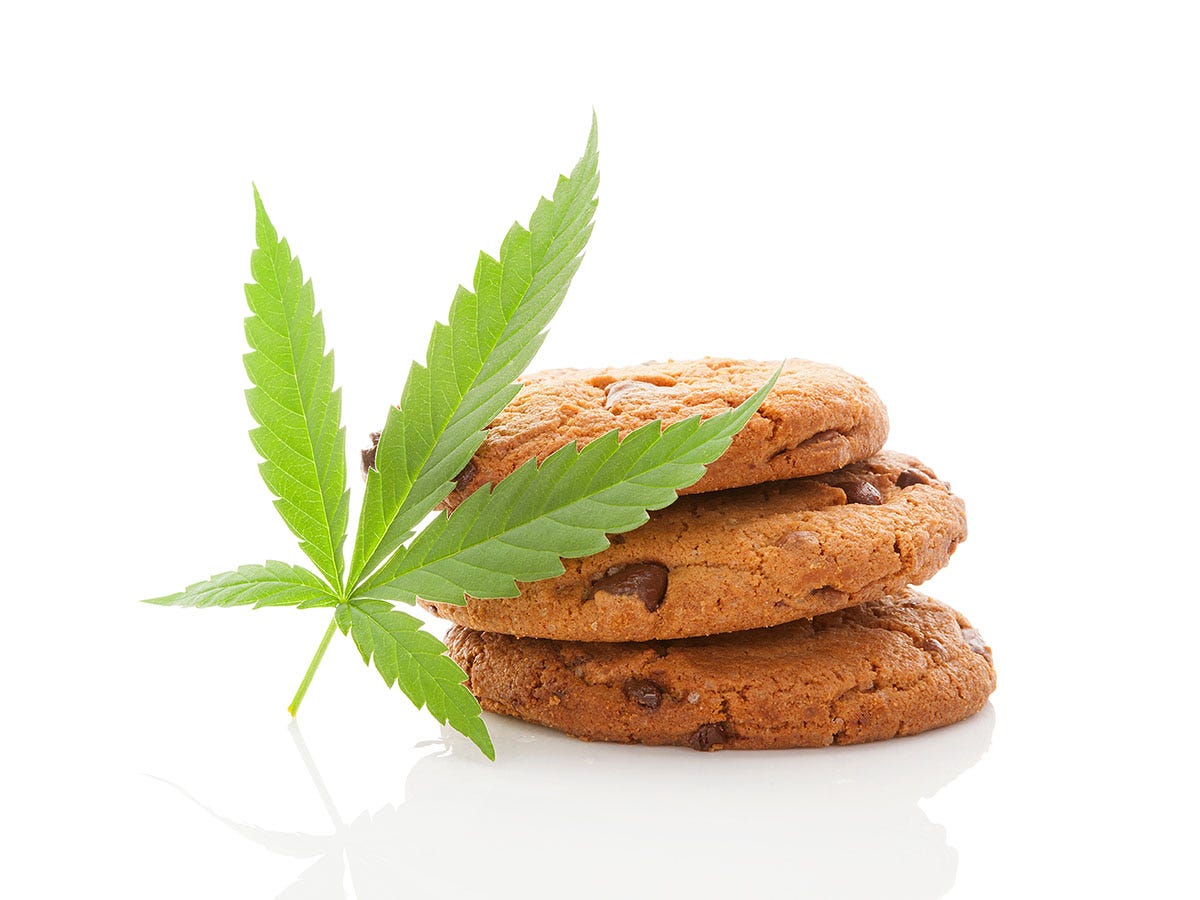
Cannabis Chocolate Chip Cookies Recipe
You can either make your cannabis cookies from scratch or use a box mix. Both approaches have their perks, and either way, you’re on your way to warm, gooey THC-packed treats.
Boxed cookie mixes are a quick, easy, and budget-friendly option. Just substitute cannabutter or cannabis oil for the regular butter or oil called for in the instructions, and you’re good to go. You’ll have fresh-baked cannabis cookies in no time, with minimal mess and effort.
But some bakers swear by making cookies from scratch—measuring out every ingredient, mixing the dough by hand, and carefully scooping it onto a baking sheet. If you’ve got the time and the skills, homemade cookies can be incredibly rewarding (and seriously delicious). Below you’ll find our recipe for homemade cannabis cookies, totally from scratch.2
Ingredients
For this recipe, you’ll need the following ingredients:
- 2 ¼ cup flour
- 1 tsp baking soda
- ½ tsp table salt
- 12 tbsp cannabutter
- 1 cup light brown sugar
- ⅔ cup granulated sugar
- 2 large eggs
- 1 tsp vanilla extract
- 12-ounce bag of chocolate chips
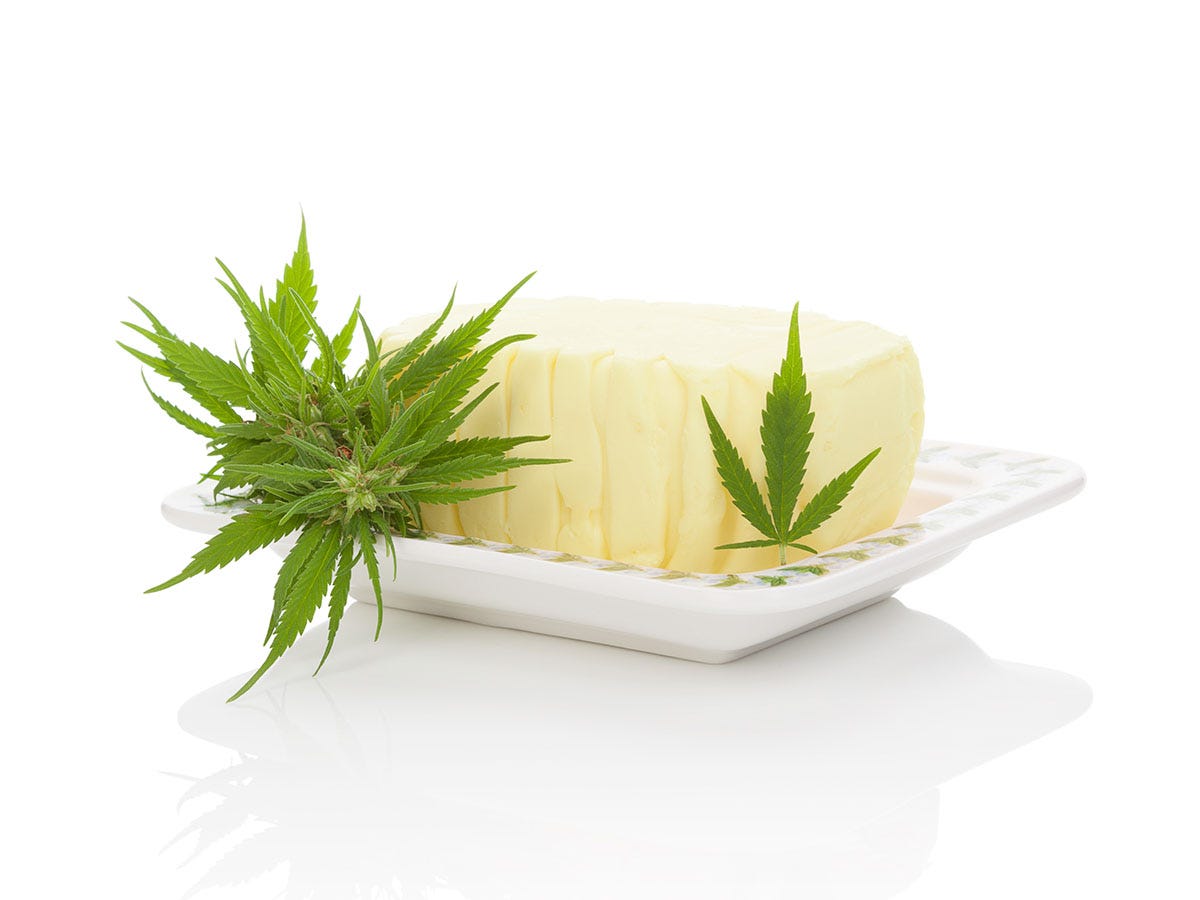

Step-by-Step Cookie Recipe
Ready to bake? We’ve broken the process down into five simple steps to make it as easy as possible. But first things first—go ahead and preheat your oven to 375°F.
Step 1: Combine Dry Ingredients
In a medium bowl, whisk all the dry ingredients together. Be sure that you level off the flour in the measuring cup before you pour it into the bowl. Skipping that step can lead to too much flour in your recipe.
Step 2: Combine Wet Ingredients
While you can definitely drop all the wet ingredients into their own large bowl, we recommend following this method. First, mix your granulated sugar and light brown sugar with your softened cannabutter. Once that’s mixed together, add the eggs and vanilla extract.
Step 3: Add Dry to Wet Ingredients
Grab your large bowl of well-mixed wet ingredients. Slowly start to drop in your mixed dry ingredients. Continue to stir the ingredients so that they mix into an even consistency. Once all your dry ingredients are added to the wet, use a spatula to fold in the chocolate chips. Measure with your heart on those (we use the whole bag).
Step 4: Roll & Bake
Grab your tablespoon and scoop up about 12 heaping tablespoons of dough. Drop those onto a baking sheet roughly 2 inches apart. Once you have your baking sheet filled with cookie dough, revisit each cookie to roll it into a ball.
By this point, your oven should be fully heated, so once you have the dough rolled, pop your tray into the oven. Now, try not to eat any of the unbaked cookie dough while you wait 12-15 minutes before pulling your tray of cookies from the oven.
Step 5: Cool
Once you are ready to pull your cookies from the oven (you want a golden shade to the dough but a little soft in the center), let the cookies sit on the baking sheet for a couple minutes. This lets them finish baking outside of the oven. Then, transfer them to a cooking rack and let them cool before indulging.
After the first batch, just repeat this process until you’ve used all your dough.
Dosage
Baking requires a good deal of math, and baking edibles is no different. If you’ve bought pre-made cannabis cookies from the dispensary, you can skip this step—their potency and dosage will be clearly printed on the package label.
For everyone doing their own baking, you can try this calculation. Say you want each cookie to contain 10mg of THC, a traditional amount for edibles. You’ll want to multiply 10 by 12, which is the number of cookies the recipe above yields. Then, you’ll divide that number, 120, by 12.5 to determine the number of tablespoons of cannabutter or canna-oil to add. You should get 9.6 tablespoons, which is a little over a half a cup (0.6). Our recipe above calls for 12 tablespoons, so all you need to do is add regular butter or oil to make up the difference.2
Be sure to mix your cannabis butter or canna-oil thoroughly into your dough to ensure an even distribution—nobody wants one cookie that’s too strong and another that’s too weak.
If you’re making your butter or oil infusion from scratch using cannabis flower, keep in mind that some THC is lost during the decarboxylation (the heating step that activates THC) and infusion process. It’s normal and expected, but something to factor into your calculations.3
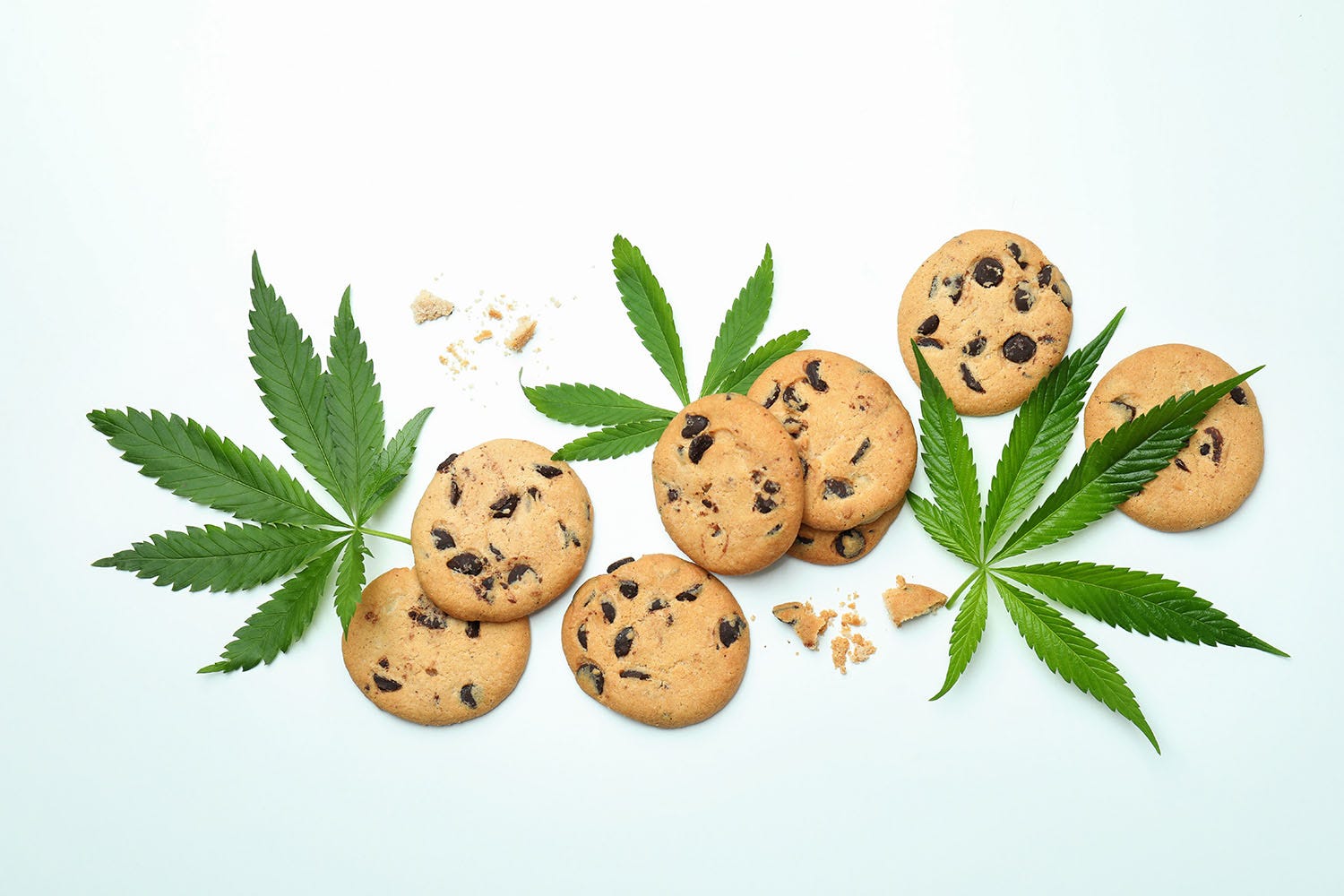

Storage and Freshness
Once your cookies have fully cooled, store them in an airtight container in a cool, dark place to preserve both their flavor and potency. While you can freeze baked cannabis cookies to extend their shelf life, it’s not ideal—freezing cookies can affect their texture and taste over time. Instead, consider freezing the unbaked cookie dough. That way, whenever a craving hits, you can simply pop a portion in the oven and enjoy fresh, warm cannabis cookies in minutes.4


FAQs About Making THC Cookies
Baking with cannabis isn’t as tricky as it might seem, but we still get plenty of questions—especially from those new to the world of edibles. Here are a few questions we’re regularly answering:
Can I use cannabis oil instead of cannabutter?
Yes! Cannabis oil is a great alternative to cannabutter and works just as well in most recipes, including cookies. It can be especially helpful for those looking for a dairy-free option. Just be sure to use the same amount of oil as you would butter and mix it in thoroughly for even potency.
How long do cannabis chocolate chop cookies stay fresh?
When stored in an airtight container at room temperature, THC cookies typically stay fresh for up to 7 days. If you want to extend their shelf life, you can refrigerate them for up to two weeks.
Can I freeze cannabis chocolate chip cookies?
You could freeze your finished cookies, but it’s a better choice to freeze the unbaked dough. That way, you can enjoy fresh, warm-from-the-oven cannabis cookies anytime you like—just bake what you need, when you need it.
How long does it take for cannabis cookies to kick in?
The effects of edibles can take anywhere from 30 minutes to 2 hours to kick in, depending on factors like your metabolism, tolerance, and whether you've eaten recently. Always start with a low dose—just one cookie or a portion of one—and wait at least 2 hours before considering more.5
Is making cannabis cookies easy?
It really depends on your comfort level in the kitchen. If you’re an experienced baker, making cannabis cookies is a breeze—just swap in cannabutter or cannabis oil for the regular kind, and you’re good to go. If you’re still building your baking skills, you might hit a few bumps with your first batch or two, but that’s all part of the learning curve. And if baking feels like more effort than you’re up for, no worries—you can always pick up premade cannabis cookies from your local dispensary.
Do I have to decarboxylate the flower before baking cannabis cookies?
Yes, decarboxylation is required to make cannabis cookies if you plan on making cannabutter or canna-oil. Without this step, your finished cookies won’t have any psychoactive effect. That said, if you’re using a tincture in your cookie’s frosting, for example, you’ll actually want to avoid any kind of decarboxylation. Tinctures are already decarboxylated, so more heat could potentially damage the cannabinoids.2


More About Canna Cookies
Whether you’re looking for flower to decarboxylate so you can make your favorite cannabis cookie recipe, or you just want to purchase your favorite edibles ready-made, you can get what you need at our dispensary. Of course, if you talk to your favorite budtender, you can also ask them for their favorite cannabis chocolate chip cookie recipe. You’ll be well on your way to building the ultimate cannarecipe collection.
Sources:
1. “How to make pot cookies,” Weedmaps, July 6, 2022, https://weedmaps.com/learn/products-and-how-to-consume/how-to-make-pot-cookies
2. “Easy Cannabis Chocolate Chip Cookies,” Emily Kyle Nutrition, April 19, 2020, https://emilykylenutrition.com/cannabis-chocolate-chip-cookies/
3. “How to make edibles: A beginner's guide,” Weedmaps, December 5, 2023, https://weedmaps.com/learn/products-and-how-to-consume/make-edibles-home
4. “Do edibles go bad?” Weedmaps, August 3, 2022, https://weedmaps.com/learn/products-and-how-to-consume/do-edibles-go-bad
5. “How long does an edible last?” Healthline, February 5, 2024, https://www.medicalnewstoday.com/articles/how-long-do-edibles-last


